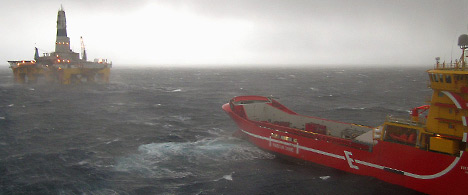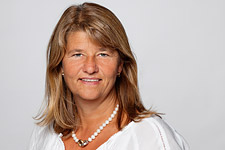
The Polar Pioneer drilling rig in the Barents Sea. (Photo: Sverre Kojedal)
Statoil's exploration experience in the Barents is already extensive. Of the 94 exploration wells drilled in the Norwegian Barents Sea so far, Statoil has been involved in 89. Nine more Statoil-operated wells are on their way here next year.
"After our Skrugard and Havis discoveries we still see attractive opportunities here," says Statoil Exploration executive vice president Tim Dodson.
"This is a less challenging area, as the Norwegian Barents is one of the only Arctic areas with a year-round ice-free zone. We also see the possibility of utilising knowledge gained here for Arctic prospects elsewhere later on – just like we've already done with Snøhvit."

Tim Dodson, Statoil Exploration executive vice president .
Statoil will start drilling in Nunatak in the Skrugard area in December, and will drill and complete four wells in this area over a six-month period.
"These wells are time critical, as any additional resources will make the Skrugard development even more robust," says Dodson.
The campaign will then continue with the drilling of two-three wells in the Hoop frontier exploration area further north in the Barents in the summer of 2013. These will be the northernmost wells ever drilled in Norway.
The 2013 Barents drilling campaign finishes in the most mature province of the Barents: the Hammerfest basin. Statoil will carry out growth exploration close to the existing Snøhvit and Goliat discoveries here.
Arctic drilling unit
In addition to increasing its drilling activities, Statoil has created a technology road map to prepare for activities in even harsher Arctic areas.
This includes:
- A tripling of the current Arctic research budget – from NOK 80 million (in 2012) to NOK 250 million (in 2013)
- A research cruise to north east Greenland in September
- The maturing of an Arctic drill unit concept
Some of the technology highlights include work to allow for cost-effective 3D seismic for exploration prospect evaluation in ice, and the continuing development of a tailor-made, Arctic drill unit.
The work on the future drilling unit is based on Statoil's experience with developing specialised category rigs for the Norwegian continental shelf (NCS).

Margareth Øvrum, Statoil Technology, Projects and Drilling executive vice president.
The unit will be one that can operate in a wide range of water depths across the Arctic, and will involve integrated operations in drifting ice.
Functions here are to include a management system to reduce ice impact, an optimised drilling package for faster drilling and increased rig availability, and solutions to ensure that the rig maintains its position. At present no robust solution for dynamic positioning dedicated for ice operation exists.
"When we see a technology need, we try to fill the gap ourselves. We have now directed our strategic focus towards developing technology for exploration and production in ice. A new dedicated unit has been established to solve these challenges," says Statoil Technology, Projects and Drilling executive vice president Margareth Øvrum.
Capacity is key
"We've secured a five-year contract for Seadrill's West Hercules drilling rig. The rig is currently being prepared for Arctic conditions, and can be used to drill consecutively in the region for years to come," Dodson says.
Broad exploration experience in the Barents Sea and available rig capacity make Statoil well prepared for the 22nd licence round on the NCS. Applications are due in early December, while the awarding of new licences will take place in spring 2013. Seventy-two blocks in the Barents will be on offer.
"The Skrugard discovery has reignited interest in the Barents. A number of major companies that had left the area will be looking to make their way back in. The competition will be fierce, but we've built up a strong track record here, and our application will reflect this," Dodson says.